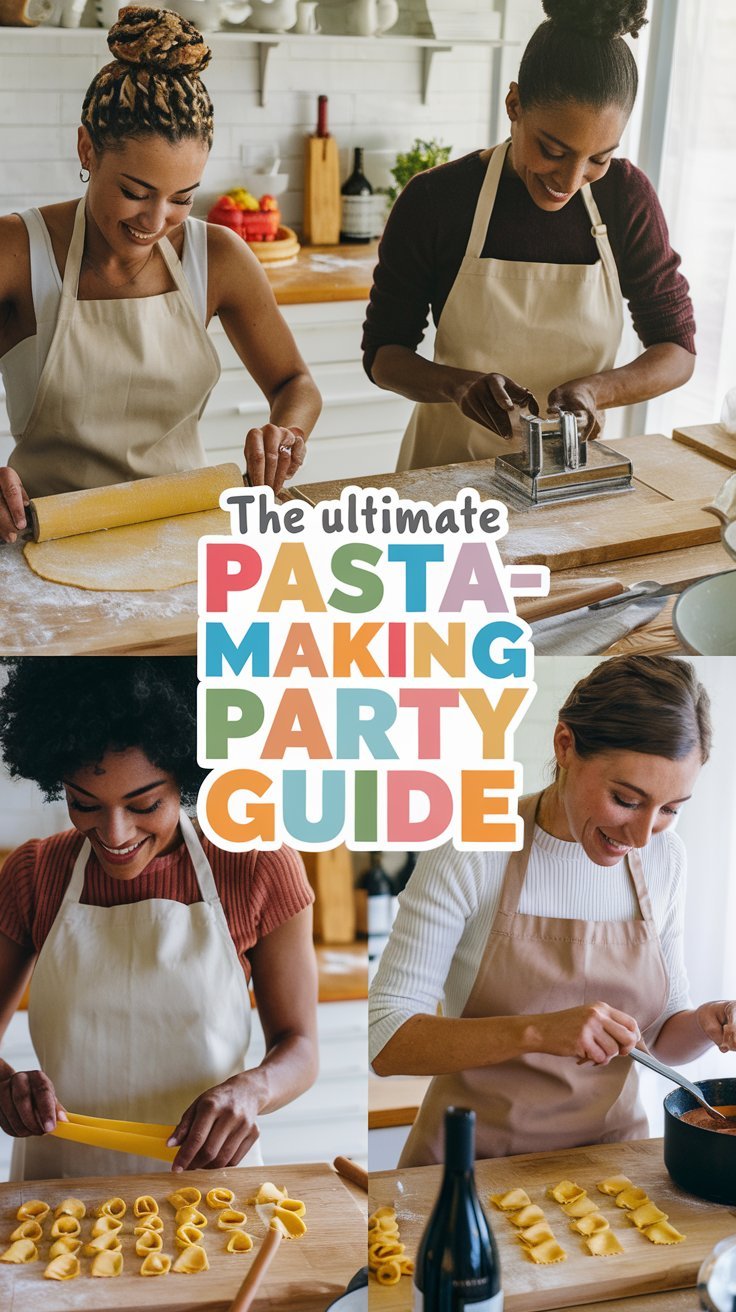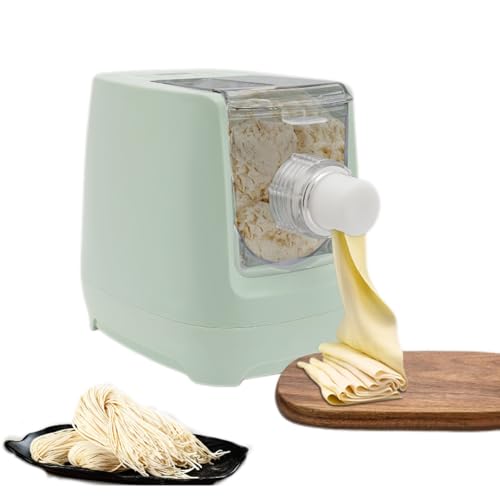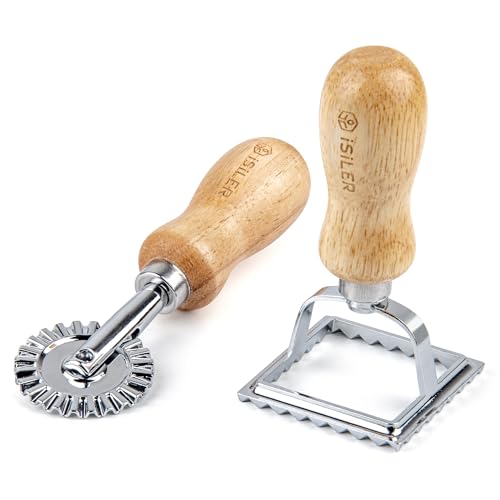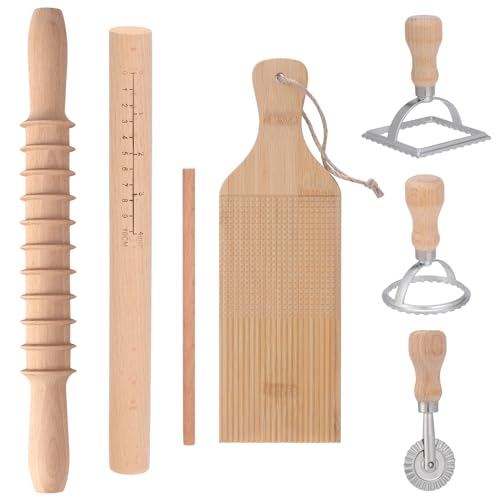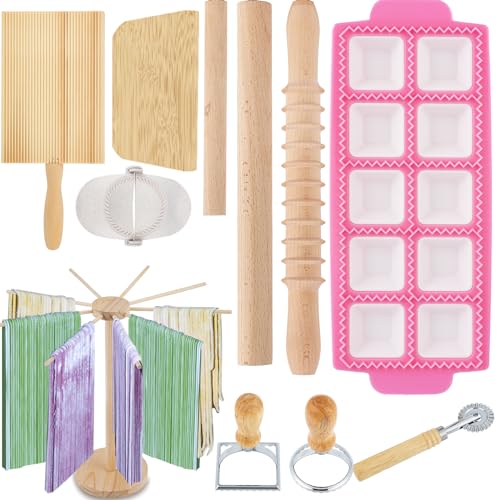There’s something uniquely satisfying about transforming simple ingredients into fresh, handmade pasta. When shared with friends and family, this culinary craft becomes not just a meal, but a memorable experience filled with flour-dusted laughter, creative expression, and the incomparable taste of pasta made with love.
Whether you’re an experienced home pasta maker or a complete novice, hosting a pasta-making party creates an interactive celebration centered around one of the world’s most beloved foods.
Planning Your Perfect Pasta Party
Thoughtful preparation ensures your pasta gathering brings together the best elements of cooking class, dinner party, and creative workshop!
Choosing Your Pasta Party Style
Consider these different approaches to pasta-making:
- Hands-On Workshop: Everyone makes their own pasta from scratch
- Collaborative Feast: Guests work together on different pasta varieties
- Regional Italian Tour: Explore pasta shapes and sauces from different Italian regions
- Pasta and Wine Pairing: Combine pasta creation with complementary wine tasting
- Progressive Pasta Party: Different stations for dough, shaping, sauce-making, and serving
- Competitive Challenge: Friendly competition for most creative or best-executed pasta
“We’ve hosted different styles of pasta parties, but the regional tour is always a hit,” shares Maria, who regularly entertains with Italian-themed gatherings. “We select three regions, learn about traditional shapes from each, and pair them with authentic regional sauces. Guests leave having experienced a culinary journey through Italy.”
Guest List Considerations
The number and mix of guests impacts your approach:
- 6-8 people ideal for hands-on pasta workshops
- Consider kitchen space and equipment availability
- Balance experienced cooks with enthusiastic beginners
- Family-friendly adaptations for multi-generational gatherings
- Advance notice for flour-heavy environment (allergies, etc.)
- Hand strength considerations for dough kneading
Equipment Essentials
Prepare your kitchen with these pasta-making necessities:
- Pasta machines (manual or electric) – at least one per 3-4 guests
- Large wooden boards or clean countertop space for each pasta maker
- Plenty of rolling pins for those working by hand
- Pasta cutters, stamps, or wheels for different shapes
- Kitchen scales for precise measuring
- Multiple mixing bowls of various sizes
- Adequate drying racks or improvised drying spaces
Creating Your Pasta-Making Environment
Transform your space into the perfect pasta workshop!
Setting Up Pasta-Making Stations
Create efficient workflow with these station ideas:
- Dough Station: Ingredients, scales, mixing bowls for initial dough creation
- Rolling Station: Pasta machines, rolling pins, and ample flour for dusting
- Cutting Station: Tools for creating various pasta shapes
- Filling Station: For stuffed pasta like ravioli or tortellini
- Drying Area: Clean space with racks or clotheslines for drying pasta
- Sauce Station: Burners, pots, and ingredients for preparing accompaniments
“Organization is everything for pasta parties,” explains Sophia, who teaches pasta workshops. “We create individual workstations with all basic supplies, then shared stations for specialized tools or techniques. This prevents bottlenecks and flour-dusted traffic jams in the kitchen.”
Setting the Italian Atmosphere
Enhance the experience with these themed elements:
- Italian music playlist for authentic ambiance
- Red and white checkered tablecloths for classic Italian feel
- Fresh flowers in simple olive oil bottles as centerpieces
- Photos or books showing Italian pasta traditions
- Rustic serving pieces and tableware
- Italian phrases or pasta facts displayed as conversation starters
Pasta Dough Fundamentals
The foundation of great pasta begins with understanding dough basics!
Basic Pasta Dough Recipe
Provide this simple starter recipe for traditional egg pasta:
- 2 cups (300g) 00 flour or all-purpose flour
- 3 large eggs
- 1 tablespoon olive oil
- Pinch of salt
- Water as needed for adjustment
Alternative Pasta Dough Options
Expand possibilities with these variations:
- Semolina pasta dough for more textured pasta
- Whole wheat or ancient grain options for nutty flavor
- Colorful vegetable-infused doughs (spinach, beet, squid ink)
- Gluten-free pasta dough alternatives
- Vegan pasta without eggs
- Flavored doughs with herbs or spices
“Offering colorful dough options makes the pasta party visually exciting,” shares Elena, who specializes in creative pasta. “I prepare spinach dough (green), beet dough (pink), squid ink (black), turmeric (yellow), and classic (cream) ahead of time. Guests can choose their color or combine multiple for striking striped pasta.”
Dough Troubleshooting Tips
Prepare for common issues with these solutions:
- Too dry: Add water in tiny amounts
- Too sticky: Incorporate more flour gradually
- Cracking dough: Likely too dry or not rested enough
- Tough dough: Overworked or too much flour
- Resting importance: 30 minutes minimum for smoother rolling
- Rescue techniques for various dough problems
Pasta Shapes and Techniques
Explore the wonderful variety of pasta possibilities!
Beginner-Friendly Pasta Shapes
Start with these accessible options:
- Fettuccine or pappardelle (simple flat cuts)
- Farfalle (bow ties from cut squares)
- Orecchiette (ear-shaped thumb impressions)
- Cavatelli (simple rolled shapes)
- Basic ravioli with cookie cutter shapes
- Hand-cut maltagliati (“poorly cut” rustic pieces)
Intermediate Pasta Challenges
Advance to these more complex forms:
- Tortellini and other folded shapes
- Multi-colored striped pasta
- Garganelli (ridged pasta tubes)
- Shaped ravioli with decorative edges
- Filled pasta shapes beyond basic ravioli
- Patterned pasta using textured rolling pins
“We create a progression of shapes during our pasta parties,” explains Jamie, who runs Italian cooking workshops. “We start with simple flat pasta to build confidence, then move to easy hand-shaped varieties, and finally introduce more complex filled shapes. The graduated challenge keeps everyone engaged without overwhelming beginners.”
Advanced Showpieces
Inspire with these impressive creations:
- Intricate multi-color patterns
- Decorative layered pasta art
- Hand-stamped designs on larger pasta sheets
- Specialty filled shapes like caramelle (candy wrapper pasta)
- Regional specialty shapes with unique techniques
- Sculptural pasta centerpieces
Sauce Pairings and Accompaniments
Complete the pasta experience with perfect accompaniments!
Classic Sauce Options
Prepare these reliable crowd-pleasers:
- Simple tomato sauce (quick or slow-cooked)
- Classic basil pesto
- Brown butter and sage
- Simple carbonara
- Creamy alfredo
- Olive oil, garlic and chili (aglio e olio)
Sauce-Shape Pairing Guidance
Educate guests about these traditional combinations:
- Thin noodles with lighter, oil-based sauces
- Ridged shapes with thicker sauces that cling
- Tube pasta with chunky meat sauces
- Filled pasta with simple butter or light tomato
- Wide ribbons with rich, creamy sauces
- Regional traditional pairings explained
“Understanding why certain shapes work with specific sauces elevates the pasta experience,” notes Olivia, an Italian cuisine instructor. “We create a simple visual guide showing classic pairings and explaining the reasons—like how tube pasta traps chunky sauce inside, or how wide ribbons provide surface area for creamy sauces to cling to.”
Beyond Pasta Accompaniments
Round out the meal with these additions:
- Simple green salad with Italian vinaigrette
- Crusty bread for sauce-dipping
- Anti-pasti platters while waiting for pasta to cook
- Italian vegetable side dishes (contorni)
- Light soups to start the meal
- Traditional Italian desserts to finish
Cooking and Serving Fresh Pasta
Transform your pasta creations into an unforgettable meal!
Fresh Pasta Cooking Basics
Share these essential techniques:
- Salt the water generously (it should taste like seawater)
- Fresh pasta cooks much faster than dried (1-3 minutes typically)
- Different shapes require different cooking times
- Taste-testing is the only reliable doneness indicator
- Reserve pasta water for sauce finishing
- Gentle handling to prevent breakage
“The biggest surprise for pasta party guests is how quickly fresh pasta cooks,” explains Marcus, who hosts regular Italian dinner parties. “We create a visual timer display showing that most fresh pasta needs only 1-3 minutes—a world apart from the 8-12 minutes they’re used to with dried pasta.”
Serving Strategies
Present your pasta beautifully:
- Warmed serving bowls or plates
- Family-style platters for sharing
- Individual plates for multiple pasta sampling
- Proper pasta serving utensils
- Fresh herbs and cheese for tableside finishing
- Wine pairing suggestions for each pasta type
Timing The Complete Meal
Coordinate the elements for perfect service:
- Prepare sauces before pasta-making begins
- Calculate backward from desired eating time
- Cook thicker pasta shapes slightly before thin ones
- Consider multiple cooking pots for variety
- Plan for sauce reheating at serving time
- Prepare side dishes in advance
Fun Pasta Party Activities
Enhance the pasta-making with these engaging elements!
Pasta Knowledge Building
Add educational components:
- Italian language lessons for pasta terms
- Regional pasta map of Italy
- Pasta shape identification games
- Before/after taste comparison (dried vs. fresh)
- Historical pasta facts and trivia
- Pasta tool demonstrations
Pasta-Making Competitions
Foster friendly competition:
- Most creative shape invention
- Best pasta plating presentation
- Most authentic traditional execution
- Blind taste test judging of different creations
- Speed challenges for specific shapes
- Team pasta relay races
“Our pasta competition categories always include technique and creativity,” shares Jordan. “We’ve found that having multiple award categories ensures that both the technically skilled pasta makers and the artistic innovators feel valued and recognized.”
Take-Home Elements
Extend the experience beyond the party:
- Pasta drying to take home and cook later
- Recipe cards for successful combinations
- Small jars of premade sauce to enjoy with future pasta
- Photos of guests with their creations
- Pasta-making tip sheets for home practice
- Mini pasta-making kits for continued exploration
Dietary Accommodations and Variations
Ensure everyone can participate regardless of dietary needs!
Gluten-Free Pasta Options
Accommodate with these alternatives:
- Specialty gluten-free flour blends designed for pasta
- Rice flour-based pasta dough
- Separate preparation area to prevent cross-contamination
- Slightly different techniques for successful results
- Recipe cards for reliable gluten-free pasta
- Managing expectations for texture differences
Vegan Pasta Creations
Plant-based adaptations include:
- Eggless pasta dough options
- Vegetable-based colorings and flavors
- Plant-based filling alternatives
- Vegan sauce alternatives for classics
- Nutritional information on differences
- Aquafaba as egg replacement in certain recipes
Healthier Pasta Approaches
Offer these wellness-focused options:
- Whole grain flour incorporation
- Vegetable-enriched dough for nutrients
- Lighter sauce alternatives
- Portion-awareness guidance
- Higher-protein pasta variations
- Balance with vegetable accompaniments
Practical Tips for Pasta Party Success
Navigate these common challenges for a smooth experience!
Flour Mess Management
Control the inevitable dusting:
- Dedicated aprons for all participants
- Strategic placement of damp cloths for hand cleaning
- Defined work areas with edges to contain flour
- Regular cleanup sweeps throughout the process
- Hardwood floors or washable surfaces preferred
- Hair ties and hand jewelry removal recommendations
Time Management Strategies
Keep your party flowing smoothly:
- Prepare certain elements in advance
- Create a realistic timeline with buffer room
- Consider partial pre-making for complex shapes
- Schedule in cleaning breaks and transitions
- Calculate realistic drying times if needed
- Balance making and eating for optimal enjoyment
“The secret to a successful pasta party is preparing the right elements ahead of time,” advises chef Priya. “I make all the sauces and fillings in advance, prepare any colored dough the day before, and set up workstations completely before guests arrive. This allows everyone to focus on the fun pasta-making parts without rushing.”
Confidence Building For Beginners
Support novice pasta makers:
- Demonstrate basic techniques before starting
- Create simple success opportunities early
- Provide written instructions at each station
- Assign “pasta buddies” pairing experienced and new makers
- Emphasize that imperfections create character
- Prepare backup dough for major mishaps
Conclusion: Pasta Parties Create Lasting Memories
The magic of pasta-making parties lies in their perfect balance of structured technique and creative expression, guided learning and playful exploration, individual accomplishment and shared enjoyment. Unlike many cooking classes where precision is paramount, pasta making embraces the wabi-sabi philosophy that imperfections add character and charm to the final creation—making it an approachable culinary craft for guests of all skill levels.
As your friends transform simple flour and eggs into silky sheets and distinctive shapes, the conversation flows naturally, hands stay busy, and a sense of shared accomplishment fills the room. The reward of sitting down together to enjoy truly fresh pasta—perhaps for many guests’ first time—creates an unforgettable sensory experience that store-bought pasta simply cannot match.
Whether you’re hosting an intimate gathering of close friends, a family activity spanning generations, or a unique social event for colleagues, pasta-making parties offer a universal appeal that brings people together through the timeless joy of creating food with our own hands. In our fast-paced, convenience-oriented world, there’s something profoundly satisfying about slowing down to practice this ancient culinary craft in good company.
Buon appetito!

